Day 8 - Hue
Gepubliceerd: 31.01.2023
Abonneren op de nieuwsbrief
My journey to the ancient imperial city of Hue actually starts in Hanoi on board the Sleeping Bus. You can imagine it like this: In three rows, bunk beds are lined up one behind the other, with your feet under the backrest of the person in front of you. The seats are about as wide as normal airplane seats. You basically only have space for hand luggage between your feet. There are no luggage racks otherwise. The aisles are about hip-width. Each guest receives a small pillow and a thin fleece blanket. It's better not to question the cleanliness of these for your own peace of mind. Once all passengers have taken their seats, thin faux leather mattresses are spread out on the floor of the aisles. These are better for sleeping than the hard floor, and flipping over or changing positions while lying in the aisle is hardly possible. How do I know? In short, an overcrowded bus and my refusal to let an older Vietnamese woman sleep on the floor have something to do with this completely new experience. However, during the journey, I was surrounded by a lovely family consisting of Grandma, Mom, and 3 children - Linh (11), 'Kevin' (10), and 'Kelly' (9). The children taught me a few words of Vietnamese. The night was quite restless, which was due not only to the tight space but also to my stuffed nose thanks to a slight cold.

Arriving in Hue, I dropped off my luggage and looked for a travel agency to spontaneously book a day tour to the most important sights of Hue. Less than 1.5 hours after arriving in Hue, I was already in a small dragon boat that took our excursion group to the Thien Mu Pagoda.
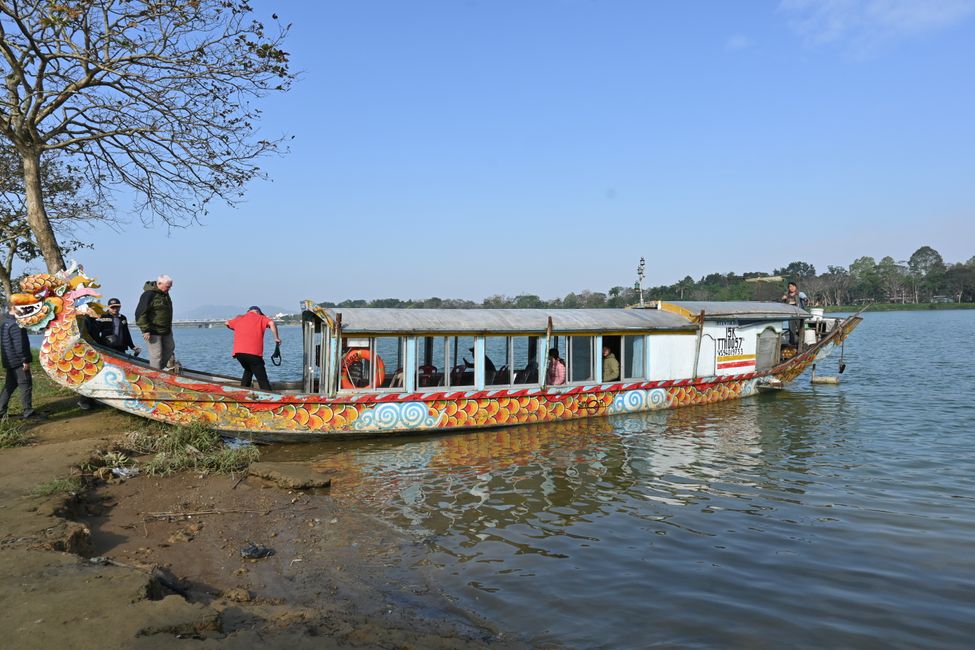
The pagoda is one of the oldest in the area. From the hill, you have a beautiful view of the Perfume River and the mountains of the hinterland.
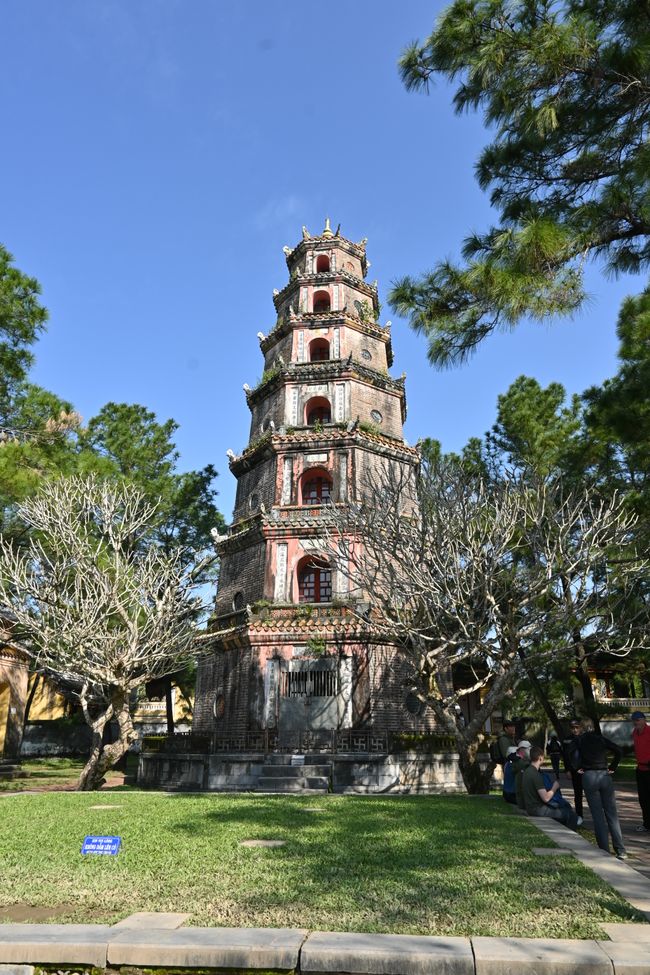
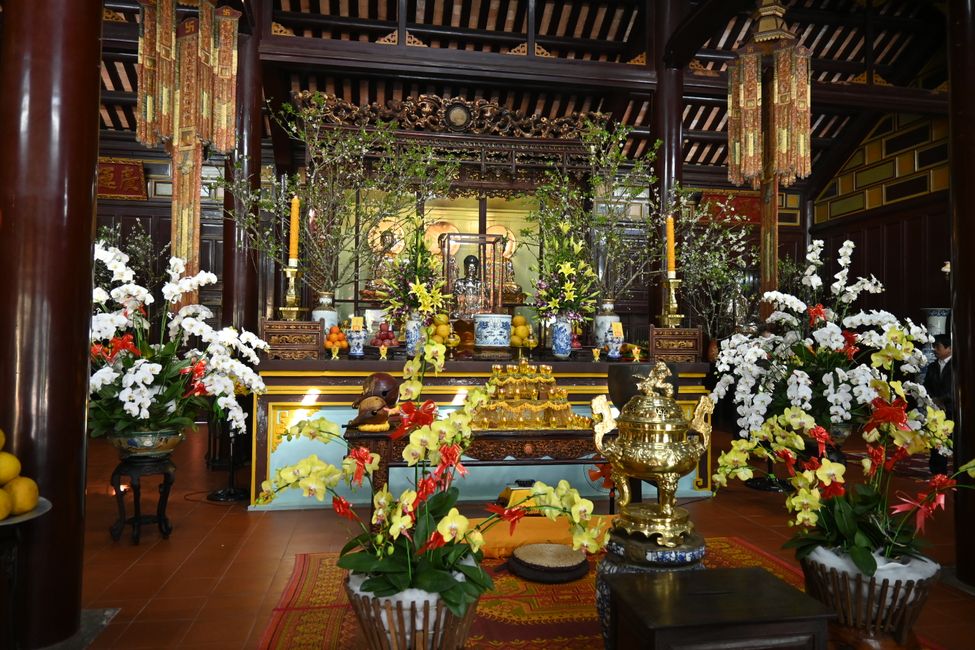
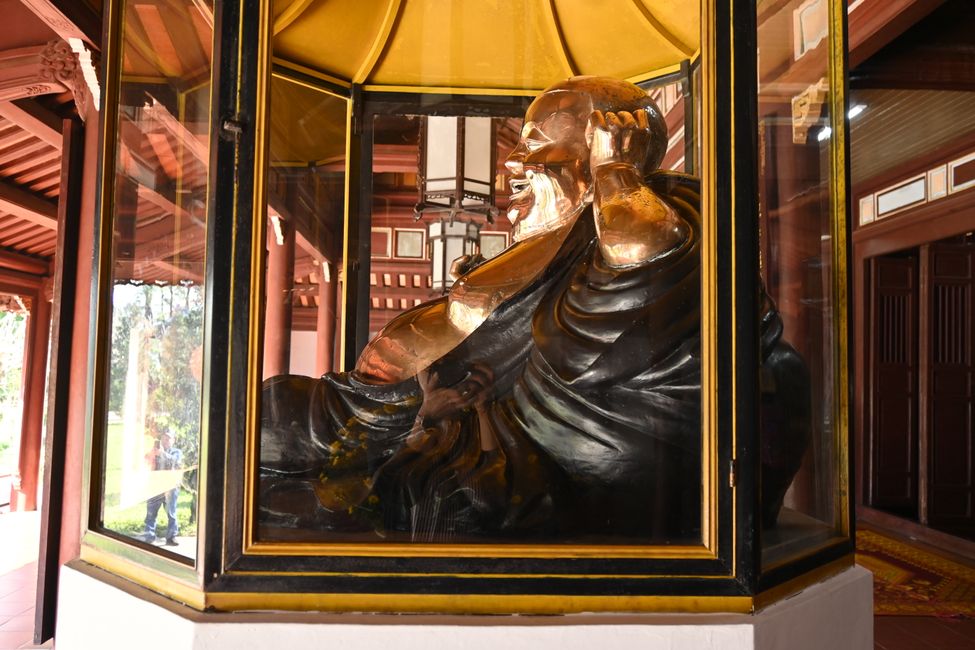
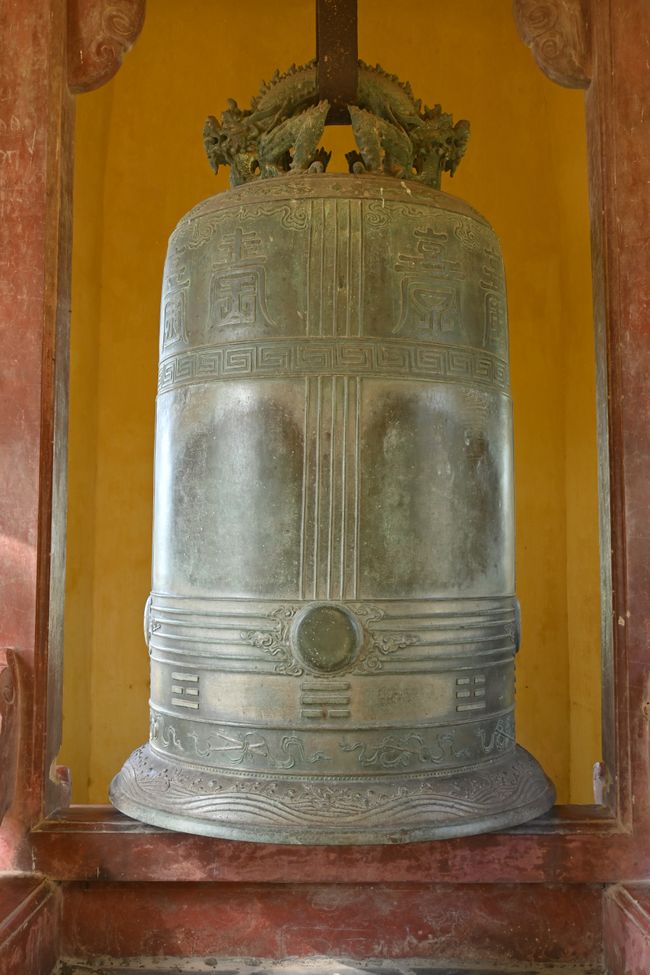
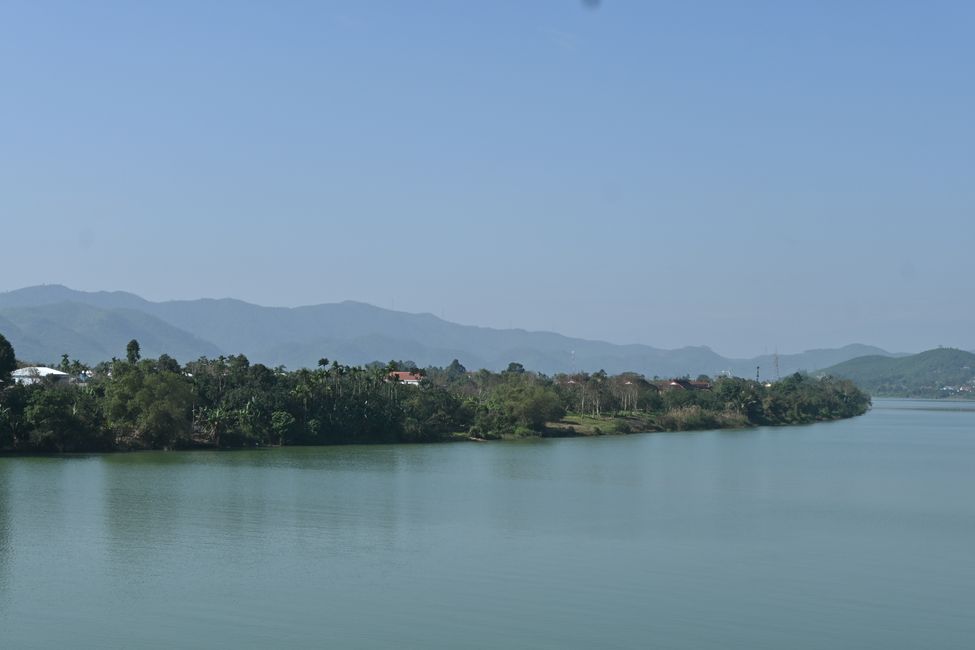
After a short visit to the Mandarim House and the surrounding garden, we continued to the Imperial Citadel. Here, in the 19th to 20th centuries, the last dynasty of Vietnam ruled: the Nguyen. Unfortunately, during the war against the Americans, a large part of the complex was destroyed. However, the Vietnamese are very committed to rebuilding the Citadel and the Forbidden City within it to restore its former glory. For me, it was fascinating how the enamel elements and tiles still shine in color after all this time.
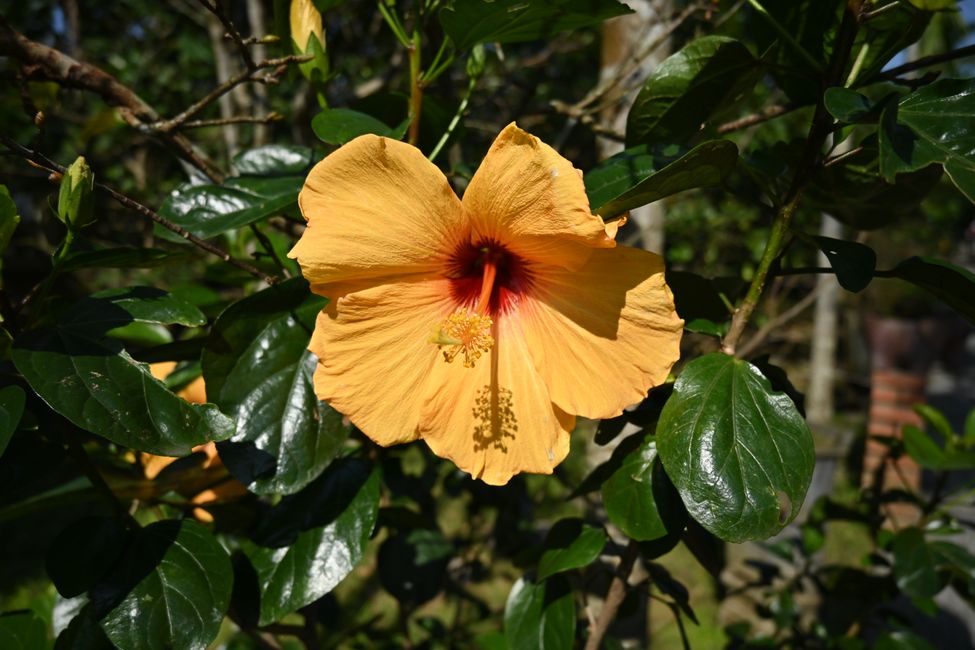
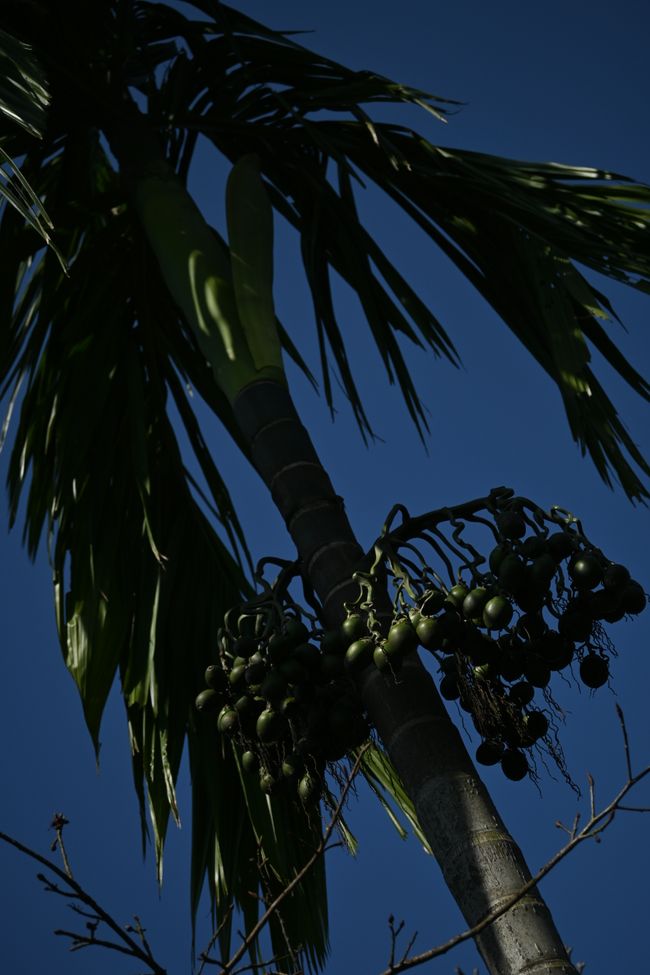
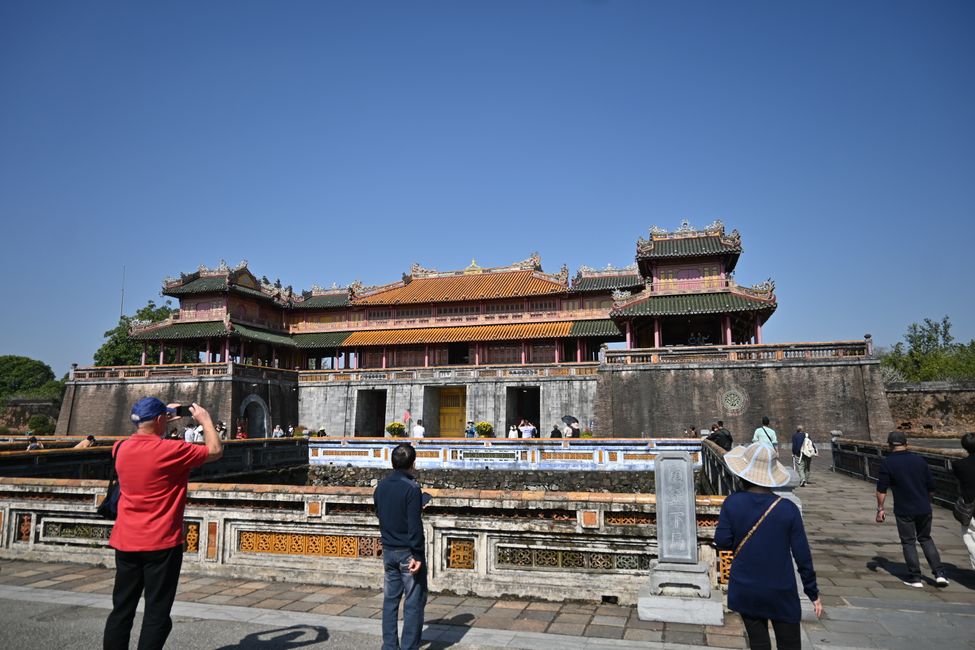
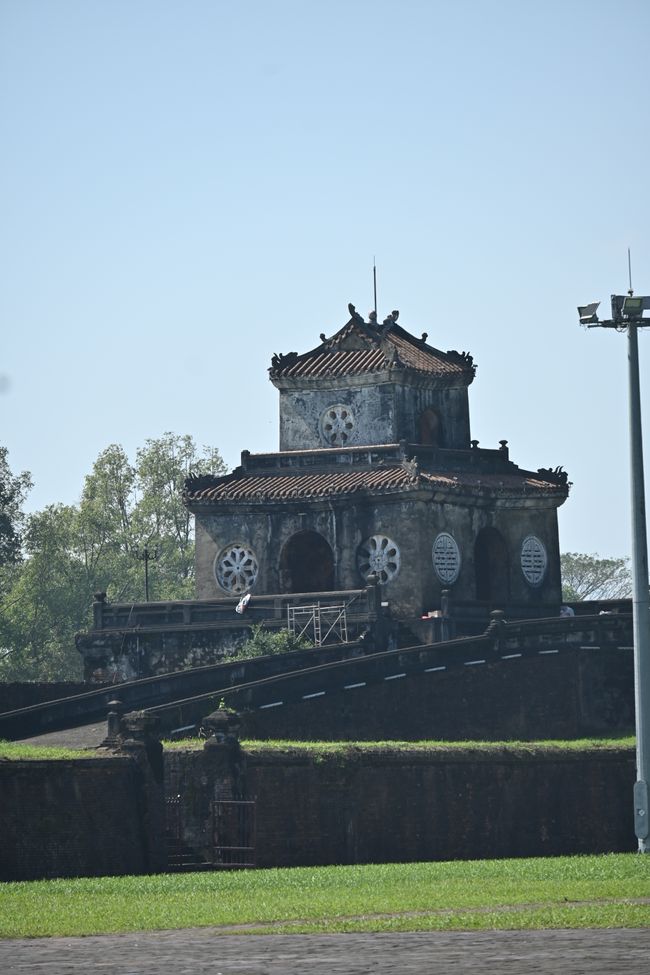
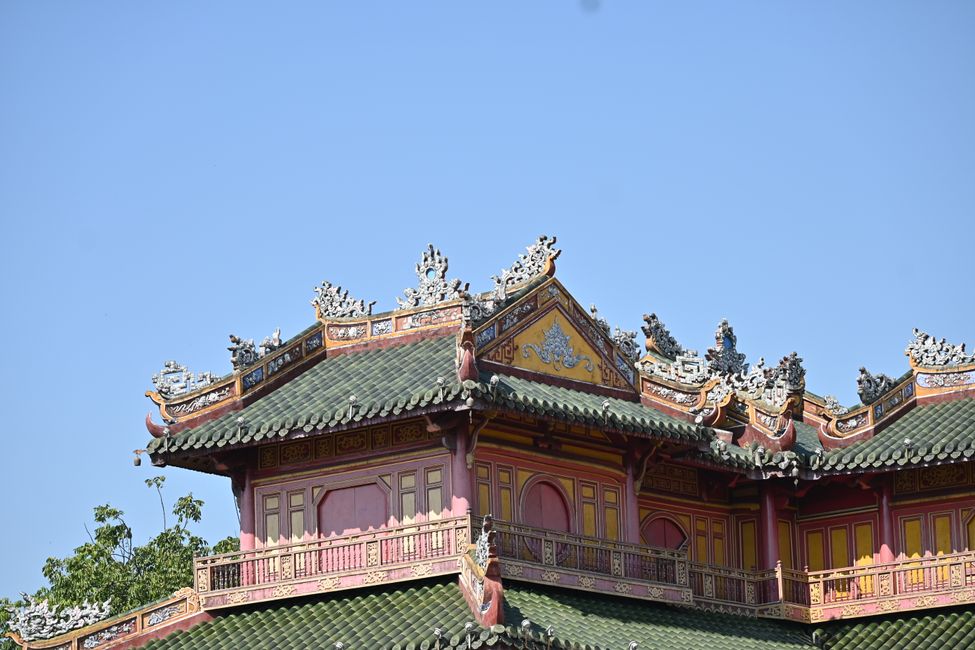
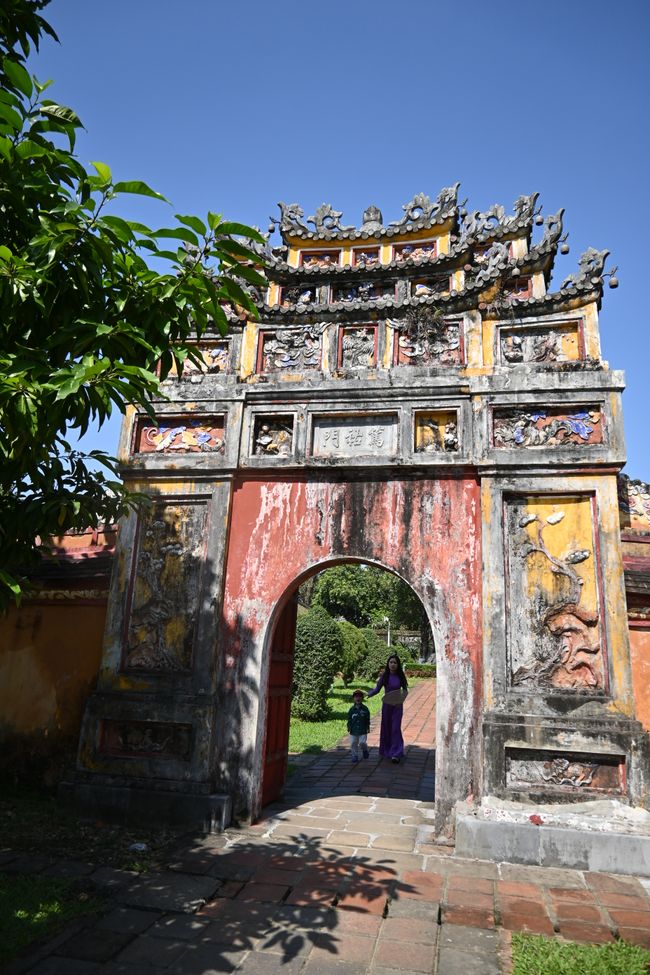
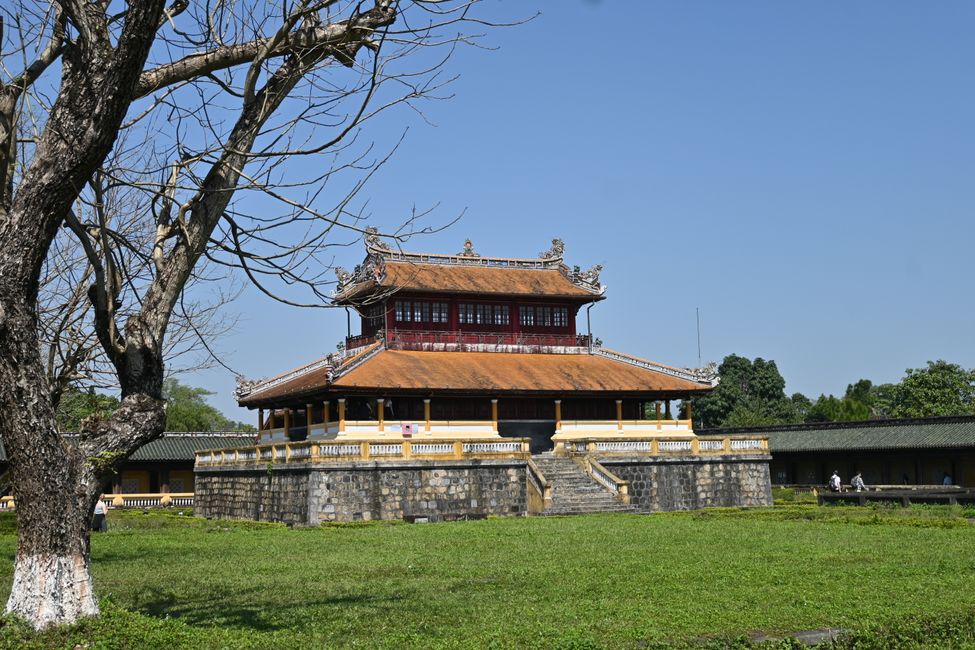
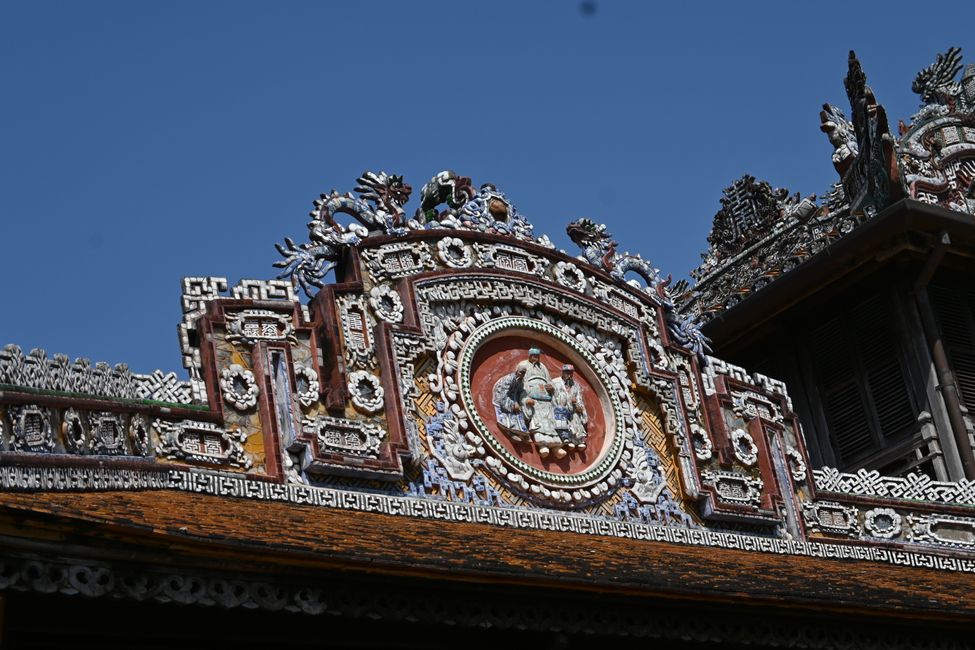
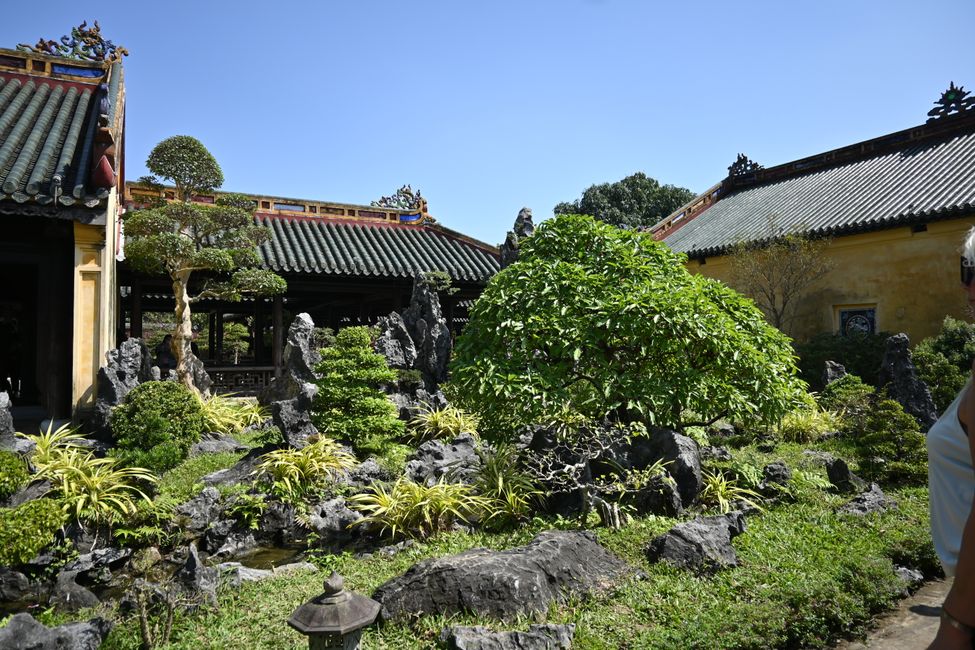
After a lunch with specialties from Hue, we went to the tomb of Emperor Minh Mang, who ruled in the first half of the 19th century. On the extensive grounds, in addition to the temple buildings, there are several lakes and gardens to admire.
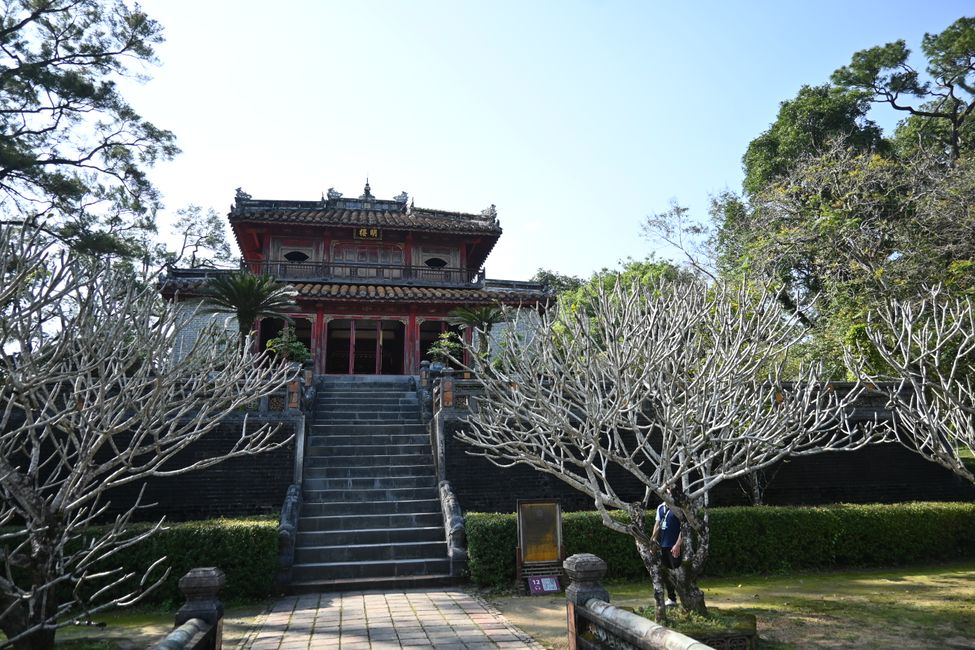
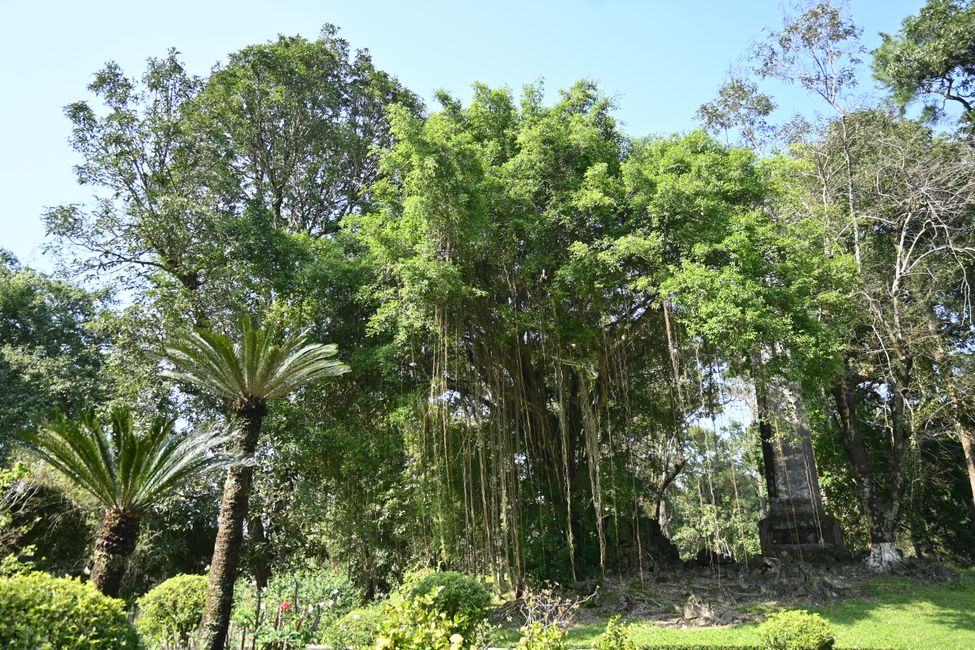
15 minutes further by bus, we visited the tomb of Emperor Khai Dinh, who ruled at the beginning of the 20th century. Built 80 years later than the tomb of Minh Mang, it stands in stark contrast to the older tomb due to its influences from French, Chinese, Indian, and Champa cultures. Built into a hillside, it takes up much less space but appears much more imposing due to its compactness. The outdoor area is in black and white - the mourning colors of Western vs. Eastern cultures. The interior areas are overwhelmingly colorful and impress with their splendor.
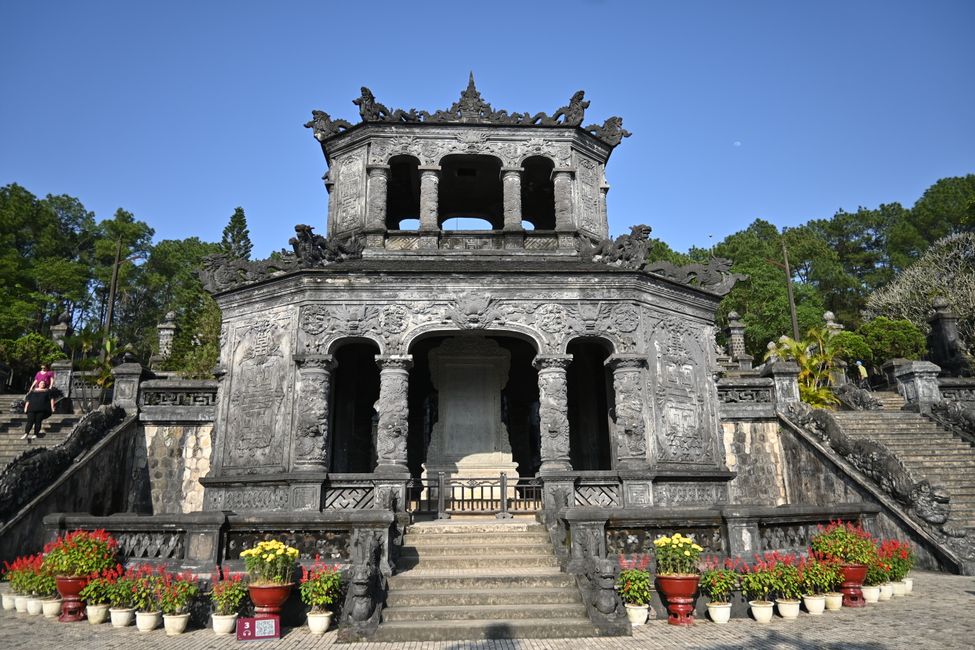
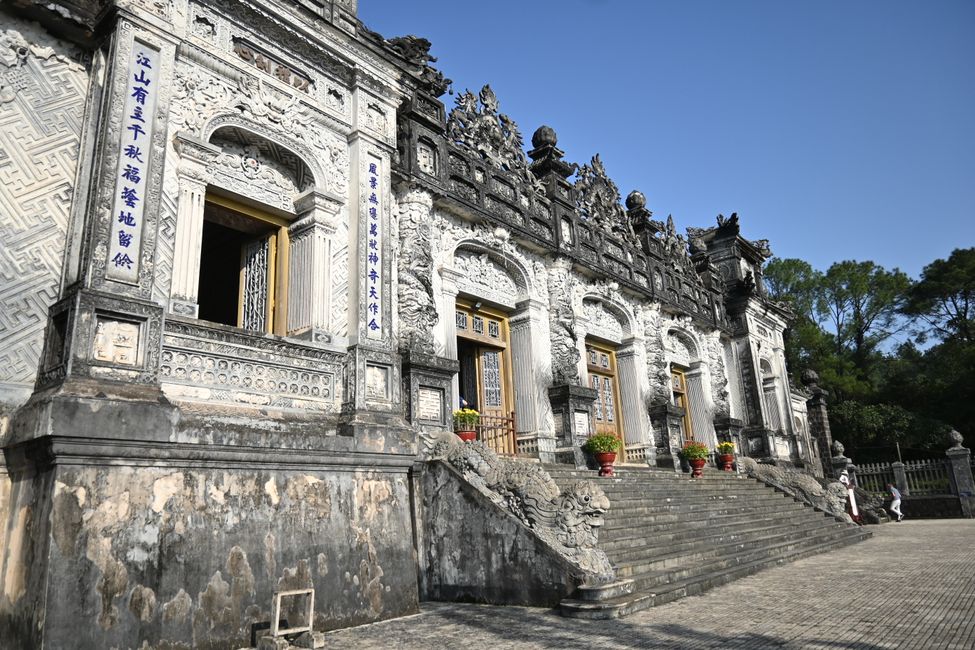
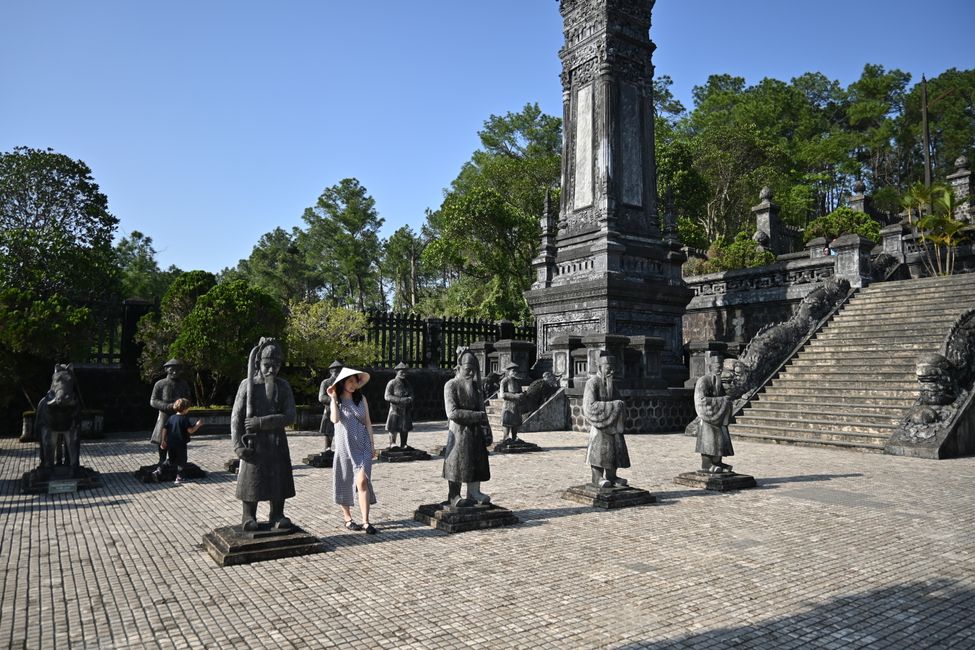
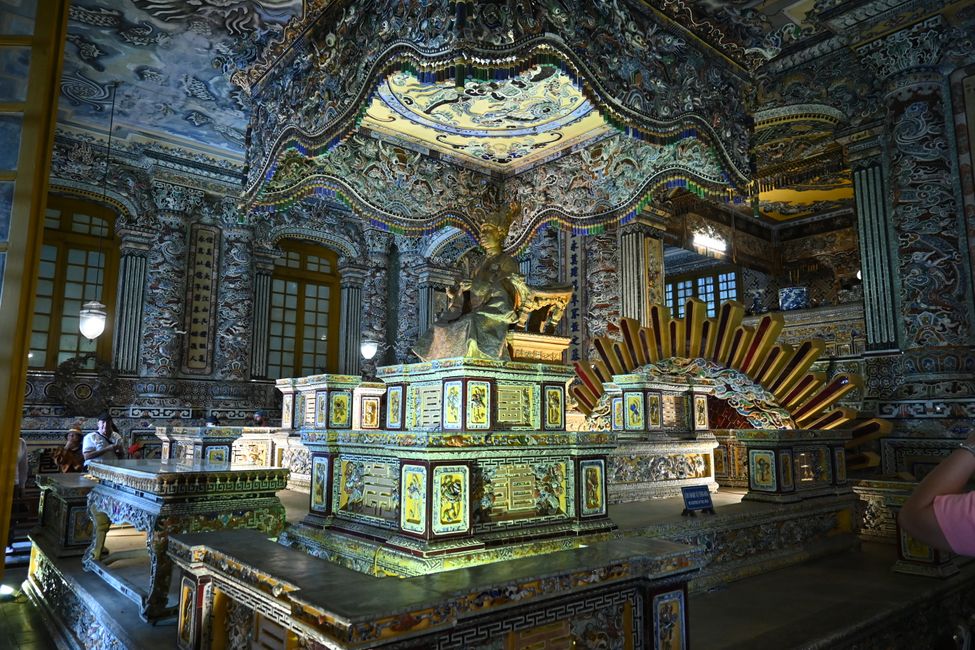
At the end of our excursion, we drove up to a hill where we were shown how incense sticks and straw hats are made. At the summit of the hill, there is a small grove from which you have a great view of the surrounding landscape.
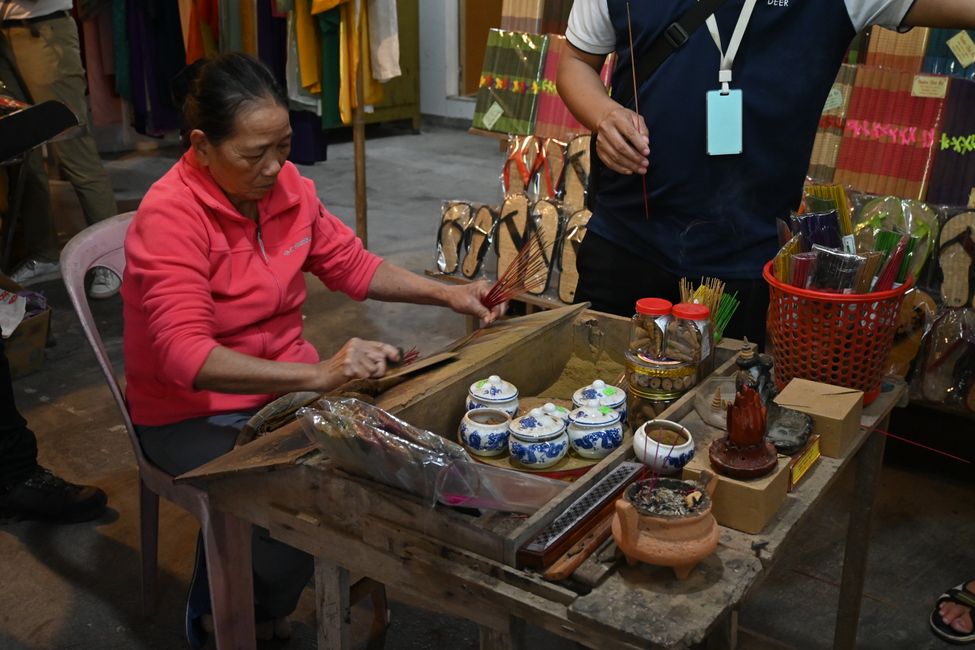
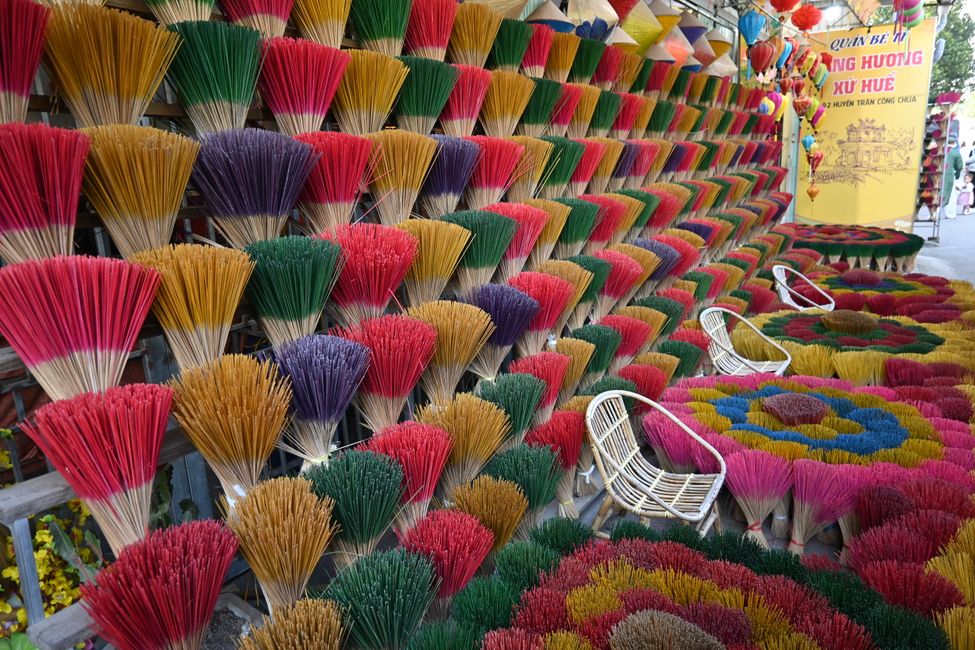
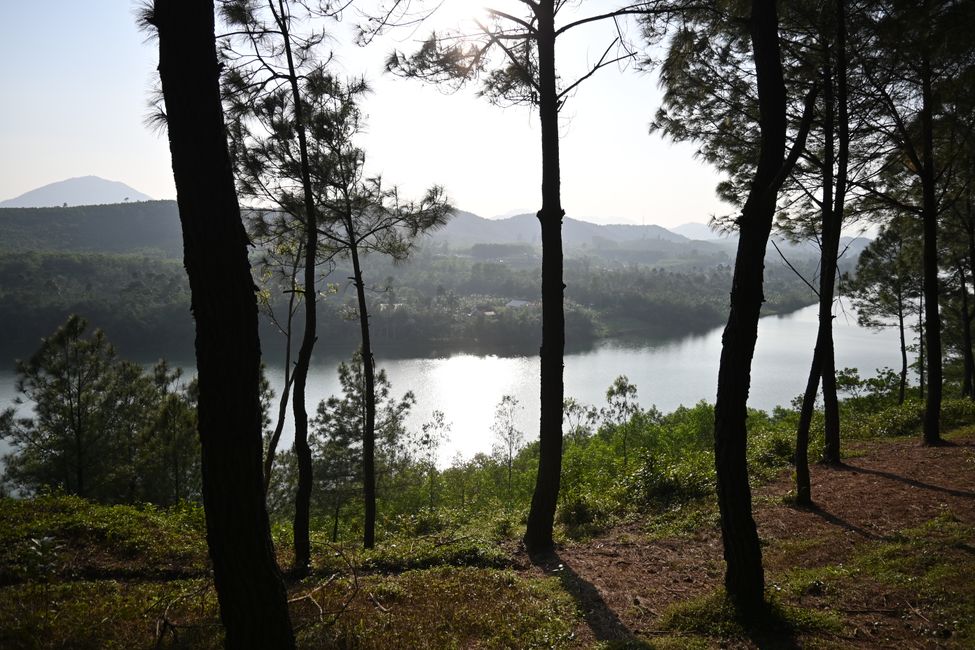
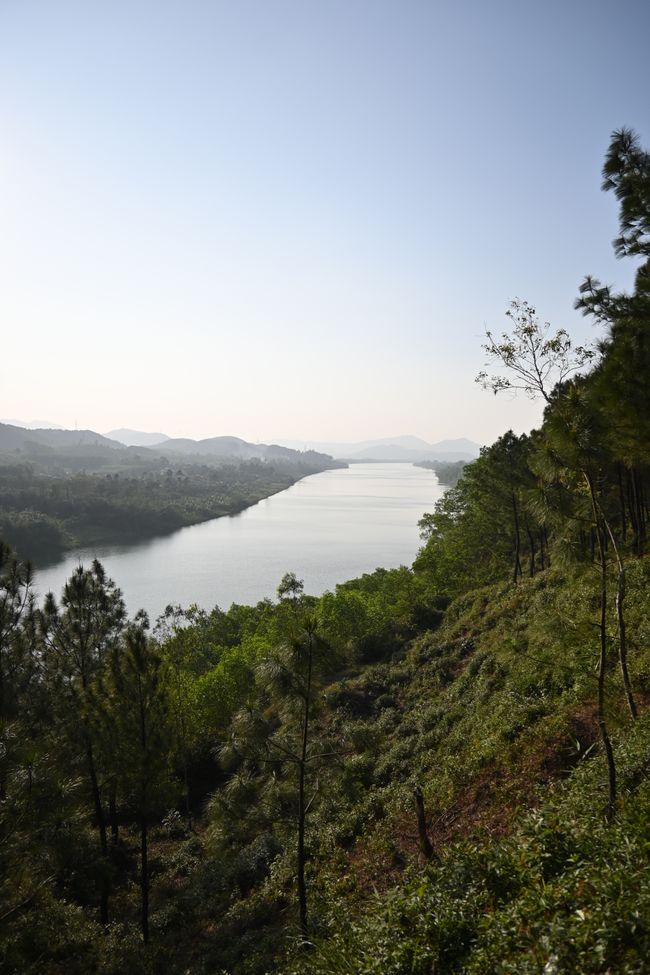
Abonneren op de nieuwsbrief
Antwoord
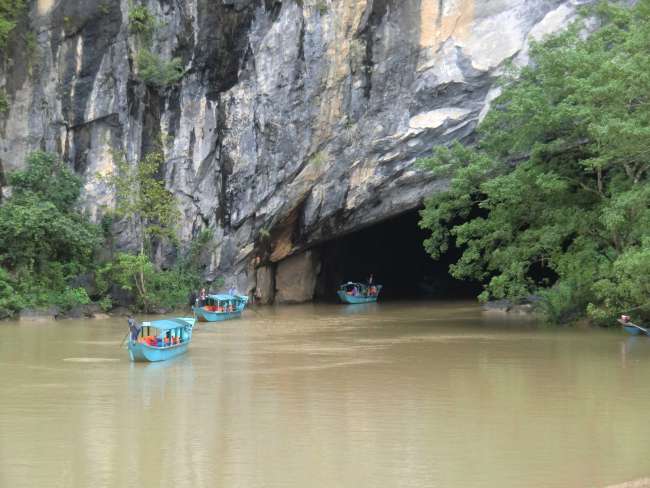
Reisverslagen Vietnam

